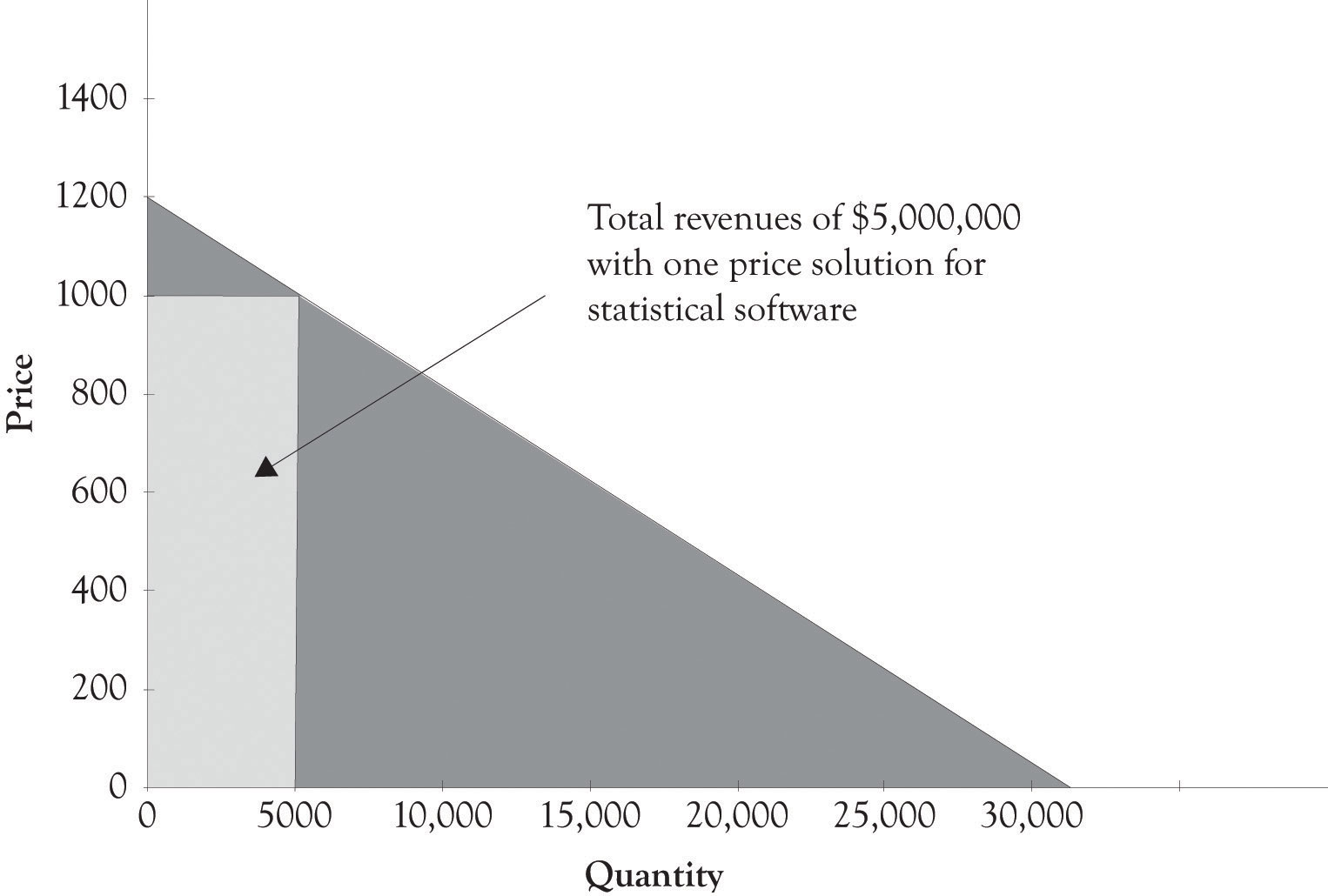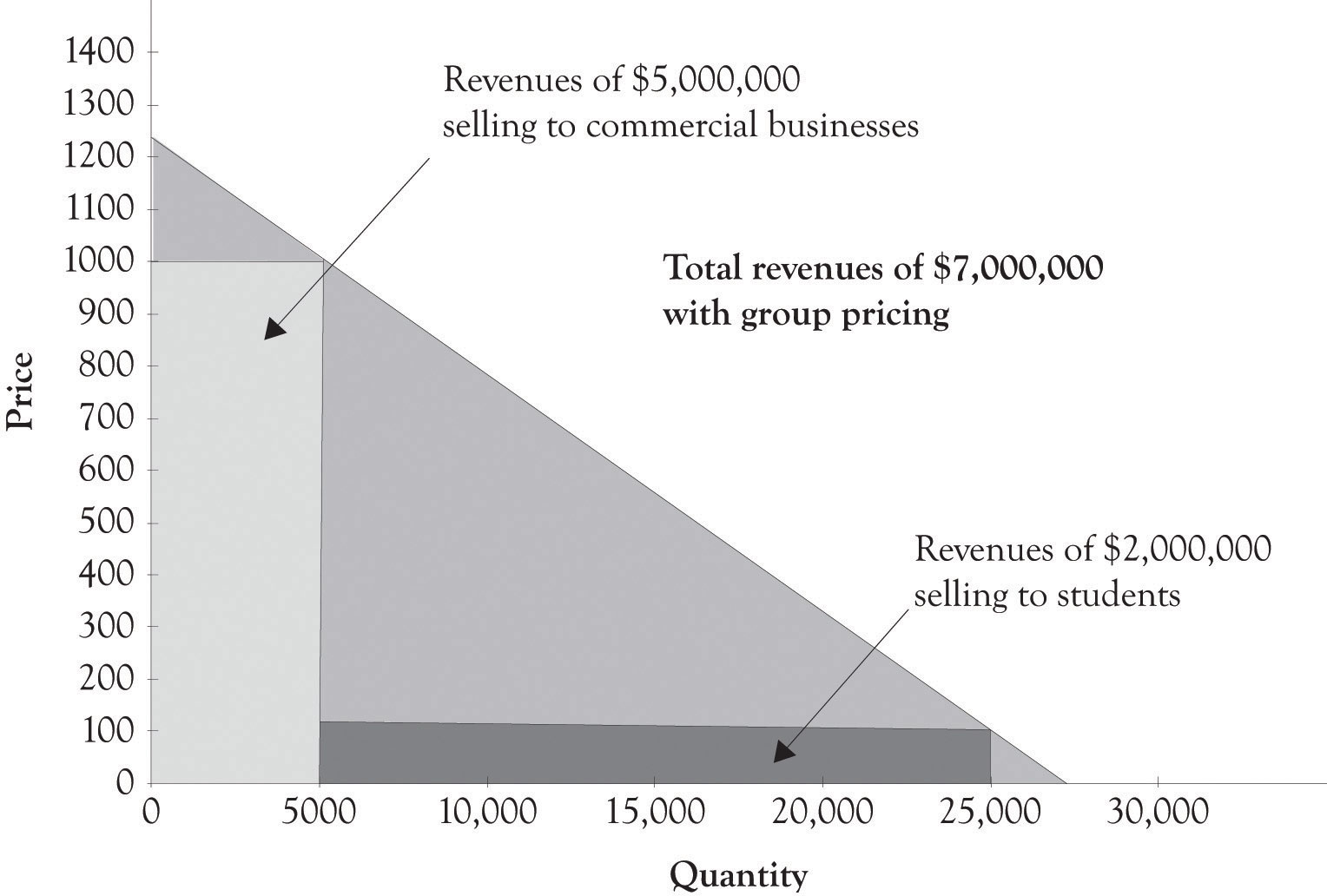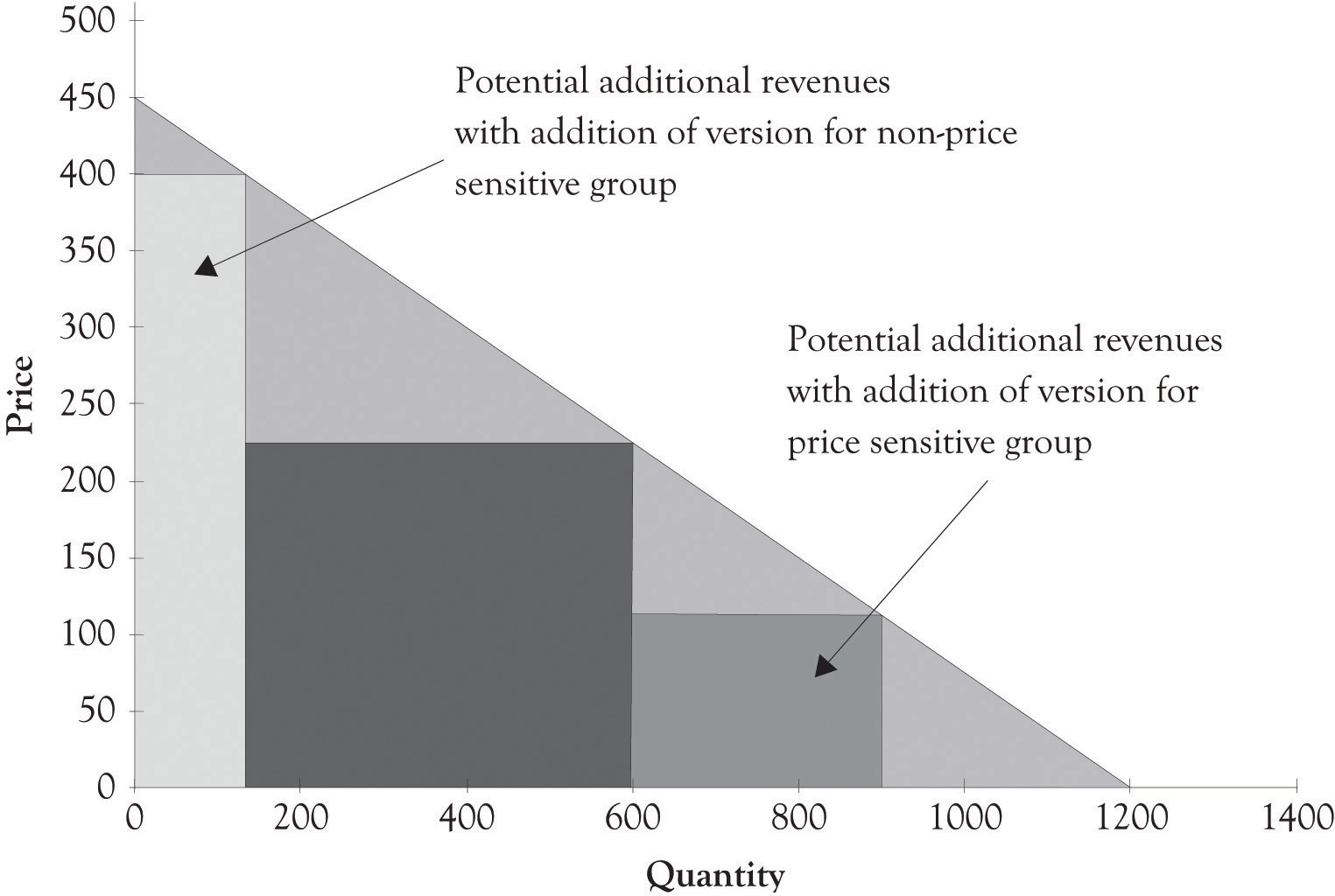GroupsThe collection of customers with some common characteristics. are the collection of customers with some common characteristics. The idea behind group pricingTo establish different prices for different groups or customer segments. is to establish different prices for different groups or customer segments. Usually, the groups are segmented because one group is price-sensitive and the members of the group have a lower-willingness-to-pay function. Examples of such groups include retired seniors versus the nonretired, business travelers versus tourists, and students versus the general public. These groups are targeted by using senior discounts, student discounts, rewards programs, frequent-flyer programs, and buying clubs.
For example, statistical software companies, such as SAS and SPSS, sell their product to students at a much lower price than they do to commercial businesses because the student customer segment is price-sensitive and not willing to pay the high price for the statistical software. Statistical software is usually very expensive costing over $1,000, but often the student edition is around $100. By charging a lower price, companies can extract revenues from segments that are price-sensitive and not willing to pay for the product. As illustrated in the Figure 2.7 "Revenues Generated by Set Price for Statistical Software", a hypothetical company offering statistical software could generate $5,000,000 in revenues by selling their software to individuals and businesses at a price of $1,000. However, if the statistical software company also sells a nonsupported version to students through academic institutions, then they could theoretically generate an additional $2,000,000 in revenues (see Figure 2.8 "Group Pricing and Additional Revenues").
One objective of having products for price-sensitive groups, such as students, is to acquire them as customers by trying to get them locked-in to using a product. They may eventually become customers for high-end products and services. In addition, it is better to have them as paying customers, rather have them engaged in copying the software. Group pricing is a common form of price discrimination, which is illustrated in Figure 2.9 "Third-Degree Price Discrimination: Group Pricing".
As noted by Phillips, there is not a clear line that distinguishes versioning from group pricing.Phillips (2005). Indeed, most approaches contain elements of group pricing and versioning. The Midas, Atlas, and Hermes categories are also product versions, but they are also targeted at Midas, Atlas, and Hermes groups according to their price sensitivities and their willingness-to-pay. As noted above, additional details on the motivation behind the three versions and the willingness-to-pay segments will be presented in later chapters.
Figure 2.7 Revenues Generated by Set Price for Statistical Software

Figure 2.8 Group Pricing and Additional Revenues

Figure 2.9 Third-Degree Price Discrimination: Group Pricing
